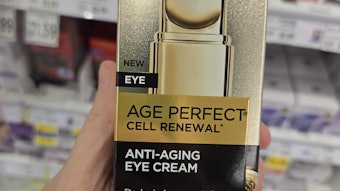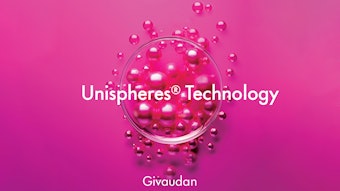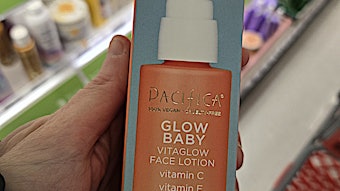Letter to the Editor Response
May 12, 2014
Respose to comments on “Some problems with ...Improved Antioxidant Penetration" from the April 2014 Cosmetics & Toiletries article
In response to the Letter to the Editor written by Professor Steven Abbott on April 11, 2014, entitled “Some problems with '...Improved Antioxidant Penetration' April C&T article,” on behalf of myself and my corresponding author, I would like to respond to his comments as follows.
1) There are many proposed theories for causes of aging. The free radical theory introduced by Denham Harman in 1956 (www.antiaging-systems.com/ARTICLE-613/theories-of-aging.htm) is one of the acceptable theories. There has also been experimental data showing the relationship between antioxidant levels in the skin and the skin's appearance. For example, it was reported that volunteers with higher levels of antioxidants in their skin had younger-looking skin, with regard to furrows and wrinkles (see Darvin M., Lademann J. Antioxidants in the skin: Dermatological and cosmeceutical aspects. In: Walters KA, Roberts MS, Editors, Dermatologic, Cosmeceutic, and Cosmetic Development, Informa Healthcare, 2007, pp 373-384).
2) Liposomes can be prepared from many various components and by many different methods, resulting in different structures. Skin penetration enhancement of active-loaded liposomes prepared by optimal formulations has been reported in many research articles, as shown partially below. In the article, antioxidant activity assayed by DPPH method in both receptor fluid and skin membrane of the liposomal cream tended to be higher than that of the normal cream. The skin penetration could be influenced by liposomal form of the active and/or cream-base formulation, which had been discussed in the last paragraph on Page 43 of the article and the first paragraph of Page 44.
Research articles referencing skin penetration enhancement of active-loaded liposomes:
Liu D, Hu H, Lin Z, Chen D, Zhu Y, Hou S, Shi X. Quercetin deformable liposome: Preparation and efficacy against ultraviolet B induced skin damages in vitro and in vivo. J Photochem Photobiol B 2013; 127: 8-17
Knudsen NØ, Jorgensen L, Hansen J, Vermehren C, Frokjaer S, Foged C. Targeting of liposome-associated calcipotriol to the skin: Effect of liposomal membrane fluidity and skin barrier integrity. Int J Pharm 2011; 416(2): 478-85
3) Newborn pig skin was used as the membrane in the study. All pieces were carefully detected for damage or leakage before use. Only complete pieces were used for the skin penetration investigation by modified Franz diffusion cells. Each cream sample was applied on the membrane surface in the donor compartment at the amount of 1 g for the experimental duration of 12 hr. This is one of the standard protocols for in vitro skin penetration studies.
This work was a comparative study between liposomal and normal creams; therefore, all parameters had to be identical, except the tested samples. Additionally, amounts of the antioxidant penetrated into the receptor fluid and retained in the skin membrane had to be high enough for analysis. Hence, 1 g of the samples and 12-hr duration were used. Generally, most in vitro skin penetration studies have been performed in a similar manner, as you can see some examples in the following article list. In real situations, consumers do not need to apply such a high dose. They are suggested to gently apply the cream all over their face and neck.
In vitro skin penetration studies:
Ng SF, Rouse JJ, Sanderson FD, Meidan V, Eccleston GM. Validation of a static Franz diffusion cell system for in vitro permeation studies. AAPS PharmSciTech. 2010; 11(3): 1432-1441
Cilurzo F, Minghetti P, Sinico C. Newborn pig skin as model membrane in in vitro drug permeation studies: a technical note. AAPS PharmSciTech. 2007; 8(4): 97-100
4) I think it was correct that the penetrated antioxidant could not be detected at the initial time (t=0) in Figure 4. Although the skin penetration mechanism of the studied liposomes was not deeply investigated, the results exhibited that the liposomal cream tended to be able to improve the antioxidant penetration. Moreover, the robust discussion in the last paragraph on Page 43 of the article and the first paragraph of Page 44 helps to clarify, for the readers. Liposomes prepared by optimal formulations can provide skin penetration enhancement of the actives, as I mention in Item 2.
I agree with Professor Steven Abbott that all “natural” compounds do not mean “safe”. However, the Hb extract has been developed and tested for activities as well as safety by a research group in Prince of Songkla University (The Hb Extract for Improving Skin Health, www.the-scientist.com/?articles.view/articleNo/28940/title/Thailand-Center-of-Excellence-for-Life-Sciences). Moreover, the Hb extract has been incorporated into some commercial products (http://www.psu-itc.com/index.php?lang=en). Until now, no complaint on these products from consumers has been reported. Hence, these evident data can certify the safety of this active.
Finally, I would like to thank Professor Steven Abbott for his comments and thank the C&T Editor for inviting me to give this explanation.
Assoc. Prof. Prapaporn Boonme, Ph.D.
Department of Pharmaceutical Technology
Faculty of Pharmaceutical Sciences Prince of Songkla University
Hat-Yai, Songkhla 90112 THAILAND










